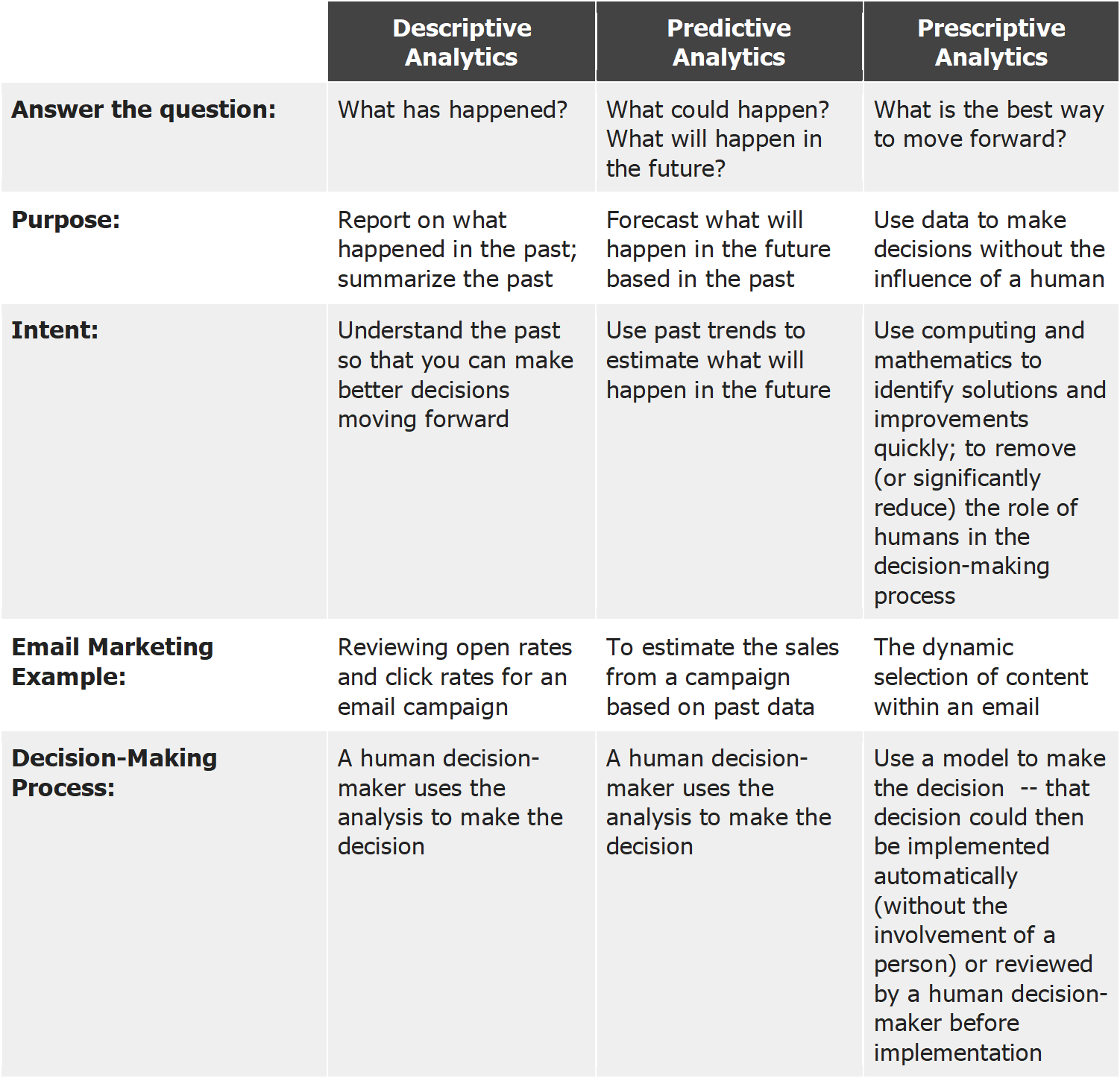A Quick and Easy Roadmap for using Analytics in Email Marketing
Analytics done well can lead to better customer service and bigger bottom lines (for example, my client used analytics insights to increase sales 250%) -- done poorly it can be a complete waste of time. This article provides a quick and easy analytics roadmap specifically for email marketers. My aim is to help you understand how analytics fits in the big-picture and overcome the analytics fears I often see holding organizations back. This roadmap provides you with a solid foundation and prepares you to take advantage of the hidden insights within your ESP account data! Yay!
This short roadmap has two parts
- Part 1: Analytics defined, and
- Part 2: Two questions to ask before you start your next analytics project.
Part 1: Analytics Defined
I define analytics as the practice of using data to help you make decisions. My analytics process has three steps:
My Analytics Process:
- Identify your objective, intention or a question that needs to be answered
- Collect and organize the data
- Analyze the data and translate the analysis into action items
This process only has three steps, but it is powerful -- following the three steps are the key difference between useful, actionable insights and data overwhelm/confusion.
In every analytics project, steps 1 and 2 above are the same. However, the types of analysis techniques used in step 3 depends on the question that you want to answer. In general, there are three types of analytics (Descriptive, Predictive and Prescriptive).
The table below compares the three types of analytics. In addition, the table includes email marketing examples for each type of analytics.
Comparison of three types of Analytics:

Awesome! Now you know the analytics basics, now let’s put analytics to work for you!
Part 2: Two questions to ask before you start your next analytics project.
- Question 1: What is the objective, intention, or the question that you want answered?
In other words, what would you love to know about your email marketing efforts? The clearer you are about your objectives, the smoother the project. In addition, clearly defining your objective will help you understand the value of the answer (and thus help you set a budget for the analytics project). Use the first row in the table above to help you and your team define your objective. Sometimes it can be challenging to identify an objective. In that case, a conversation with an analytics expert can help you quickly identify potential objectives -- I really enjoy having these types of conversations!
- Question 2: Can your organization do the required analysis in-house?
Once you know the question you want answered, the next step is identifying the people to help you answer it. Thankfully there are professionals, myself included, that can help you make the most of your data. If you have people with analytics expertise on your staff, that is great! Their expertise will help your organization learn from its data and make better decisions. If your team isn’t familiar with analytics, you may benefit from the help of a consultant. When you are contracting analytics support, it is essential to only work with companies or experts that can clearly explain the data and models they use in a way that you can understand.
Once you’ve identified your objective and your analytics expert (either in-house or external), follow the three-step Analytics Process I outlined in Part 1 above to guide your project!
How was that? Hopefully quick and easy! With a few key concepts you are now empowered to use analytics to derive meaningful, actionable insights from your email marketing data!

 How to resolve AdBlock issue?
How to resolve AdBlock issue? 
